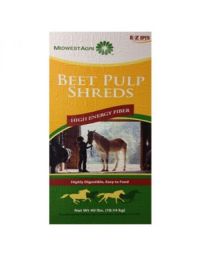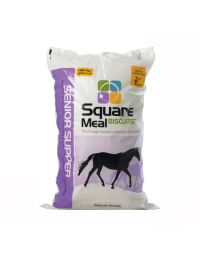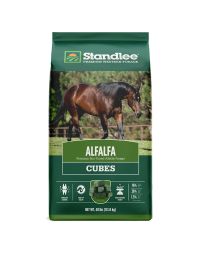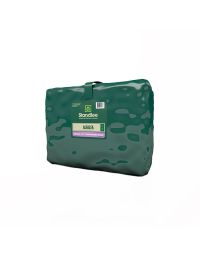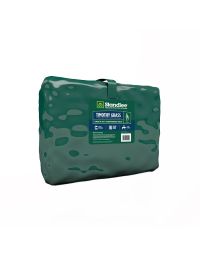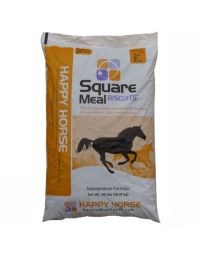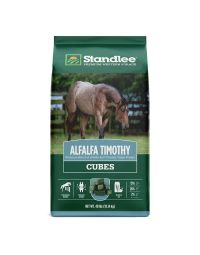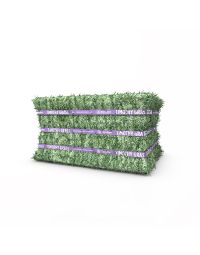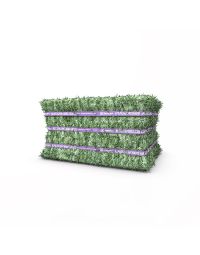Hay Shortages are due to differing patterns of weather throughout the growing season and occur when the nation’s farmers are unable to make a fraction of their normal hay crop. Spikes & Houles can provide strategies to help supplement your hay during these shortages. While bulk, natural hay may be harder to find, products like compressed hay bales, chopped hay, hay biscuits, pellets & cubes, have made it easier and easier to provide the same nutrition during a hay shortage. You can also mix and match these options to meet your horses' needs throughout the year & as a regular part of their routine. When it comes to hay, a pound is a pound regardless of the source. If you’d like to feed your horse hay in the form of hay cubes, hay pellets, or chopped hay, you should feed a pound of the alternative form of hay for every pound of baled hay you’re replacing. Let’s look at each type of hay product more closely.
Compressed hay bales are most commonly 50 pound bales of timothy or alfalfa hay that have been compressed into a small bale cube, so they take up less storage space. When feeding with compressed bales, always feed by weight not by volume. These bales need to be cut open almost 12 hours before use as they will expand greatly. Some are shrink-wrapped & some are banded. The shrink-wrapped bales (Alfalfa & Timothy) stay clean & fresh if hauled or stored for longer periods of time. While others need to be used faster & stored properly. You can find both shrink wrapped & banded compressed bales from Standlee at Spikes & Houles.
Chopped hay is a great substitute. This is hay that has been harvested, dried and chopped. Chopping makes it easier to chew for senior horses or foals. This option does not need to be soaked, so this option promotes saliva production and improves the natural digestive process. Chopped hay can be fed in a trough, bucket or corner feeder. Many opt for this as there is little to no waste, it’s tasty and easy to chew. Standlee has a 40# bag of Chopped Alfalfa hay and Triple Crown Chopped Alfalfa is 50#.
Hay cubes or biscuits are made of chopped hay, dried and compressed into cubes. While biscuits are usually softer, these cubes are typically fed soaked, making them soft and easier to eat. Standlee Alfalfa Cubes 40# are harder compressed than other brands and require soaking. Square Meal is a brand that is made locally in Cokato, MN and they have three varieties of biscuits which are softer and easier to chew than other brands like Bale in a Bag, Happy Horse and Senior Supper. They come in a 40# bag and are a blend of alfalfa and grass hay. Triple crown has Alfalfa-Timothy cubes and Assurance Feed also has hay cubes.
Pelleted alfalfa, timothy or teff grass hay comes in 40 or 50 pound bags. Like hay cubes, hay pellets are made from dried long-stem forage. The dried forage is ground and compressed into pellets. Pellets may be fed dry or soaked if a horse tends to bolt the pellets and choke. Spikes and Houles carries a ton of options for pellets including Nature Organics 50# alfalfa pellets, 40# bags of Standlee alfalfa/timothy, and teff grass pellets. ADM also offers a 50# bag of Hay Extender pellets made of alfalfa meal, soybean hulls and wheat middlings, while Purina makes Impact Hay Stretcher which is alfalfa based.
Cavalor Fiberforce is a high fiber, low sugar blend of chopped hay and pellets. It is designed for horses with metabolic and gastrointestinal issues.
Beet pulp can also be added to your horses' diet as an additional fiber source. It is low in carbohydrates and sugar. Soak beet pulp for a minimum of 15-30 minutes before feeding. We carry Midwest Agri 40# Beet Pulp Shreds with or without molasses and Standlee 25# Beet Pulp Shreds at Spikes & Houles.
Unlike traditional baled hay, these alternative forms of hay can contain more than just hay. For instance, it’s common for chopped hay to have molasses. Be sure to read the product label so you’re aware of what nutrients you’re providing, especially if you’re concerned about your horse’s sugar intake.
Depending on the product, it may or may not contain vitamins, minerals, and additional protein or amino acids. If the product doesn’t provide these nutrients, you’ll need to use grain, a ration balancer, or a multi-vitamin supplement to meet your horse’s nutrient requirements.
A horse needs 2%-2.5% of their body weight in forage daily, so a 1000# horse would need 20-25# per day.* Cubes, biscuits, chopped or bagged hay can replace 100% of their normal hay diet. Pellets only replace 50% as there is not enough roughage to keep the gut functioning properly. Beet pulp 50%, and it is more calorie dense than hay. It is a great fiber source for HYPP horses. The calcium/phosphorus ratio may cause bone development issues in lactating broodmares or growing horses, however. Go by dry weight before soaking.
* Always read the bags instructions and follow their recommended feeding rates as every formula is different. *
Quick notes:
Alfalfa hay 15-20% protein, higher calcium and lower fiber. Higher calorie/energy content with lower sugar and starch.
Grass hay 10-12% protein.
Timothy hay, fine bladed with bushy heads and higher protein.
Orchard grass has a thicker blade, is soft in texture and lower protein
Teff grass is native to Africa and just catching on in the U.S. It is fine stemmed, low in sugar and 12-14% protein.

